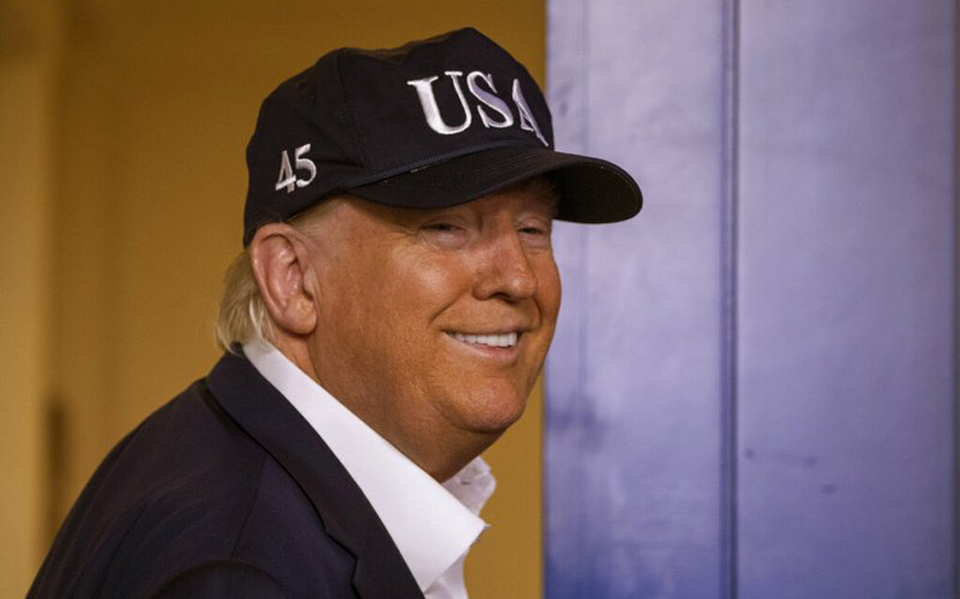
What’s in a name?
Quite a lot, it turns out—and President Donald Trump knows it.
He’s invoked a great deal of anger by deliberately calling the novel coronavirus spreading throughout the world a “Chinese virus” or “China virus” in recent statements. This was preceded by the use of “Wuhan virus” or “Chinese coronavirus” by several hosts on the right-wing Fox News Channel, which Trump watches religiously. No great surprise where he got the idea.
The backlash has been immediate, intense, and entirely justified. Over a month ago, the World Health Organization gave the virus its official name: COVID-19, in keeping with new best practices for the naming of infectious diseases.
These practices include not identifying a pathogen with a geographic area, culture, animal, or group of people—an approach designed to minimize stigma and keep names as neutral as possible. The guidelines were adopted in May 2015, nearly five years ago. Clearly this was not a move made to appease China in the wake of the current situation—unless the organization is somehow capable of time travel—but the COVID-19 pandemic is the first major outbreak to apply these changes.
That timing gave some within the Hong Kong protest clique an opening to spread absurd conspiracy theories about the international organization and its relationship with China. As part of that campaign of misinformation, they stubbornly insisted on continuing to call the disease the “Wuhan virus” or “Chinese virus,” in direct defiance of the WHO’s recommendation. They wanted to tie one country—their own country—to a virus that could have emerged at any time or place.
Now the far right in the U.S. has taken up the baton, with a media blitz that will undoubtedly lead to violence and discrimination against people of any Asian descent, Hong Kong residents included. Mission accomplished, I suppose.
Defenders of this terminology will claim past diseases were given names tying them to geographic areas. They talk about Ebola and Zika, named for rivers in the African Congo and Brazil, or the “Spanish flu” which ravaged the globe in the early 20th century. Why not use Wuhan or China in the same vein, they ask?
This is what a child does—excusing bad behavior by saying everyone else was doing it. Just because these naming conventions were the norm in the past doesn’t mean they should be continued. It used to be acceptable for white Americans to use racial and ethnic slurs—does that mean it’s OK to do it now? You won’t hear any Fox News host countenance that, only because it has become socially unpalatable even for the far right to do so. They have to rely on a thin veneer of plausible deniability to get their brand of bigotry across. And they have an audience in Trump, as we’ve clearly seen.
In any event, the historical argument is little more than a clumsy dodge. It doesn’t even hold water for the counter-examples they trot out to justify their own prejudice. If we take a deeper look at the motivations for such practices, we can find a nearly identical ugliness simmering beneath the surface.
Designating the 1918 influenza as the “Spanish flu,” for example, has its own nasty connotations. Spain was a neutral country in World War I and was thus the first place to accurately report its outbreak. It was then branded with a name that became the global shorthand at a time when Hispanics were seen as dangerous outsiders by many in the United States—not that that’s changed much, considering the current treatment of Latin American immigrants.
But that name doesn’t reflect the science, regardless. Over 100 years later, there are still competing theories for the virus’s origin, and few of them point to Spain. And even if it began in Spain, with conclusive proof as to why, it is still wrong to lay the blame for a contagion that knows no border at the feet of a single people or country. Viruses are not living things. They are a spontaneous and terrible product of evolution, existing solely to replicate and spread. They have no hidden agenda, no nationality. They are a menace to all humankind. Pretending otherwise breaks up international solidarity at a time when it’s needed most.
Again, this is why the guidelines were changed—to avoid the very attacks being made now. Those who deliberately ignore this fact in service of a political mission are exploiting the worst of all human impulses for their own purposes. The ones who will take their message to heart make no distinctions between Chinese people and people of other ethnicities or nationalities. They will harass anyone who looks different, anyone who’s an “other.”
Which, of course, is the point. Trump’s election laid bare the ugly reality of life in the U.S. for minority groups and made overt what was previously whispered or pantomimed. Previous presidents deported Mexicans en masse or threw families in cages; Trump took the extra step of separating those families and putting communities in a state of terror via violent raids. Previous presidents were more sophisticated in their efforts against China, “pivoting to Asia” and drafting trade agreements to box the country out; Trump uses the blunt instrument of tariffs and calls COVID-19 the “Chinese virus.”
This serves several purposes. First, it creates a distraction from the abysmal U.S. response to the outbreak, which has left tens of thousands of probable cases untested, likely more. The population isn’t ready to weather this imminent calamity, despite the time afforded them by the control measures taken by China and other countries months ago. That is criminal negligence. Talking about Trump’s choice of nomenclature instead of his carelessness is a win as far as he is concerned.
Second, it makes the virus someone else’s problem. If COVID-19 can be successfully branded a uniquely Chinese phenomenon, then the blame doesn’t fall to him. Never mind that the intense focus on China during the early weeks of the epidemic minimized the threat the virus posed to the rest of the world, and made many in other countries complacent—shifting responsibility and rescuing what’s left of his image is all that matters to an egotist like Trump.
Finally, and most troubling of all, it opens a new front in the ongoing anti-China offensive waged by the U.S. government and media. The rest of the planet is waking up to the fact China has done its best in a difficult moment and come out the other side with valuable experience. They’re asking for help in handling their own outbreaks after seeing what China has been able to accomplish, and China has been happy to provide it. The U.S. sees this as a loss of ground and is wildly striking wherever it can to win back terrain in an imagined battle for hegemony.
Trump thinks this will help the U.S. back to the top in an influence game only he is playing.
He couldn’t be more wrong. If the U.S. wanted to win some global goodwill, it could put aside these petty squabbles and get to work solving a crisis—not a “Chinese crisis”—that puts the whole world at risk.












Comments